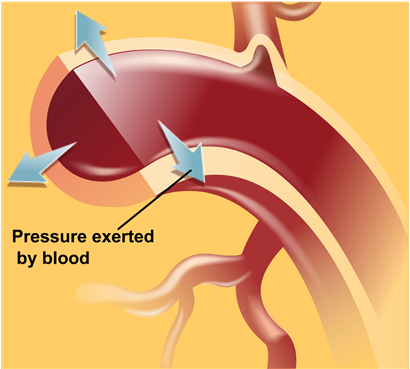
Hypertension
Hypertension, or high blood pressure, is the most common cardiovascular disorder affecting populations in the world. Blood pressure actually indicates the force of blood pushing against artery walls as it flows through the arteries or blood vessels in the human body. Blood vessels get filled with blood up to a certain capacity. Too much pressure of blood on the vessel wall, or high blood pressure, can threaten healthy arteries and lead to life-threatening conditions such as heart disease and stroke. High blood pressure is hazardous due to its propensity to cause strokes, heart attacks, heart failure, or kidney disease. Everybody should be aware of his/her blood pressure.
Generally, high blood pressure is categorized as:
Treatment strategies to manage high blood pressure include changing lifestyle suitably and possibly drug therapy to lower blood pressure to less than 140/90. For patients who have diabetes or chronic kidney disease the recommended blood pressure is less than 130/80. The aim of management is to lower high blood pressure and protect important organs, like the brain, heart, and kidneys from damage. Research has found that treatment for hypertension causes a significant reduction in stroke (reduced an average of 35%-40%), heart attack (20%-25%), and heart failure (more than 50%).
9,600+
Happy Patients
10
Qualified Doctors
500+
Successful Surgeries
100+
Insurance Partners
It is not known exactly what causes high blood pressure. But, there exist several factors and conditions that may play a role in its development. These factors include:
As per the guidelines, the normal blood pressure should remain within 120/80 mm Hg. A very stringent lifestyle modification is recommended in terms of diet control & modest exercise if the blood pressure ranges in between 120-139/ 80-89 mm Hg & medical treatment is recommended if the blood pressure is more than 140/90 mm Hg. High blood pressure tends to run in families and is more likely to affect men than women. Increasing age and race also play a role in causation. Diet and lifestyle also greatly affect es hypertension. Other factors that can raise the risk of having hypertension include obesity; diabetes; stress; insufficient intake of potassium, calcium, and magnesium; lack of physical activity; and chronic alcohol consumption.
Most of the patients may not even know that they have hypertension. The only way to know if your blood pressure is high is through regular checkups. Some patients do have certain symptoms, especially if their blood pressure is extremely high. These are:
In case anybody has these symptoms, a doctor should be consulted immediately. Hypertension that is not treated or poorly treated can lead to stroke, heart disease, kidney failure and eye problems.
Hypertension is often called a “silent disease” as the patient usually doesn’t know about it. There may be no symptoms or signs. But, it keeps on damaging your body. So, it’s important to regularly monitor your blood pressure. Tests should be conducted for heart disease as hypertension is a risk factor for heart disease.
Measuring Blood Pressure
Blood pressure is measured in mm Hg. Most often, blood pressure is measured with a device known as a sphygmomanometer. Blood pressure is measured in two ways: systolic and diastolic. Systolic blood pressure is the maximum pressure during a heartbeat. Diastolic blood pressure is the lowest pressure between heartbeats.
According to the most recent guidelines, a normal blood pressure is less than 120/80 mm Hg. Hypertension is blood pressure that is greater than 140/90, while prehypertension consists of blood pressure that is 120 to 139/80 to 89.
Apart from BP measurement, your doctor will ask about your medical history (whether you’ve had heart problems before), assess your risk factors (whether you smoke, have high cholesterol, diabetes, etc.), and talk about your family history (whether any members of your family have had high blood pressure or heart disease).
A physical examination of the whole body will also be conducted by your doctor. If you’re diagnosed with high blood pressure, your doctor may recommend other tests, such as:
High blood pressure which is not managed or is uncontrolled can lead to:
Any patient with BP readings greater than 120/80 should be encouraged to enroll for treatment planning. This includes lifestyle modifications, such as eating a healthier diet, quitting smoking, and getting more exercise. Treatment with medication is recommended to lower blood pressure to less than 140/90. For patients who have diabetes or chronic kidney disease the recommended blood pressure is less than 130/80.
Treating high blood pressure involves lifestyle changes and possibly drug therapy.